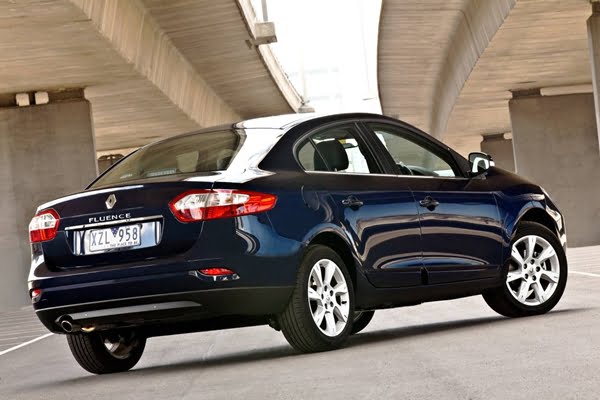Renault is back on the small car hustings with a well-rounded value package
Road Test
Price guide (recommended price before statutory and delivery charges): $29,990
Options fitted to test car (not included in above price): metallic paint $800
Crash rating: Five-stars ANCAP
Fuel: 91 RON ULP (95 RON recommended)
Claimed fuel economy (L/100km): 7.9
CO2 emissions (g/km): 185
Also consider: Mazda 3; Toyota Corolla; Volkswagen Jetta
Overall Rating: 3.0/5.0Engine/Drivetrain/Chassis: 2.5/5.0
Price, Packaging and Practicality: 4.5/5.0
Safety: 4.0/5.0
Behind the wheel: 3.0/5.0
X-factor: 2.5/5.0
Renault has other Méganes too, you know. On its release at the Sydney motor show in late 2010, the RS250 hot hatch grabbed all the limelight after elbowing aside its more prosaic namesake hatch and the Fluence sedan version.
This was kind of a pity, because if my time in a Fluence was anything to go by, the cooking model Méganes have plenty to offer buyers prepared to look beyond the usual suspects in the affordable compact market.
Our week with the Fluence Privilege coincided with a road trip to Brisbane. Useful, because that's the kind of driving that really puts smaller cars to the test. The trip was originally scheduled for a large luxury model -- the kind that massages, warms, cools and cossets you as it gobbles the kms, leaving you daisy fresh at the other end of a long day at the wheel. When that test was postponed, the Renault stepped up to fill the space.
To grab the buyer's eye, Renault has taken the Korean approach (the Fluenec is built there by the way), attaching an incongruously low pricetag to a generous kit list. For your $30K you get keyless entry and start, full leather furniture, auto headlights (bi-xenon optional), foglights, rain-sensing wipers, cruise control with speed limiter, electric glass sunroof, rear parking beepers and 17-inch alloys shod with decent Continental rubber.
The sedan's standard Arkamys audio package is better suited to it than the hotter, louder Megane RS250. It's got the lot: auxiliary and USB inputs plus streaming audio integrated with the Bluetooth phone function. Renault has built a TomTom satnav system in with a remote control parked in a special scabbard that fits in one of the console drink holders. It works well, but don't expect it to last long with youngsters in the car. I had to snatch it back a couple of times.
The dual-zone climate control works well too -- not a given with Euro-centric vehicles. Soft and Fast settings alongside the Auto function: Soft to cool things down in the front; Fast for when there are people in the back. We found simple old Auto worked best. Rear passengers get vents on the back of the console, and there's enough nicknack storage distributed around the cabin to get by with.
The controls take a little getting used to, particularly the little audio and phone cluster sitting behind the wheel on the right. It's some Gallic tactile thing -- Renault seems to love this device, others don't. I found it takes some fiddling, with its click-wheels and row of accordion-key switches. But once you're used to it, it's a no-brainer.
With the heavy rain that this summer period brought to southeast Queensland [Ed: this review was written before the devasting floods that hit in January 2011], we had abundant opportunity to check the Fluences road credentials in adverse conditions.
With 103kW and 195Nm feeding into it from the 2.0-litre petrol four, the Fluence is no tearaway, but it does behave well and, to its credit, it's no less of a tearaway with a full load of people and bootful of stuff. It's also economical. At the end of our week -- of which the Brisbane trip took only four days, it returned an average 5.8L/100 km -- well below the official 7.9 combined-cycle figure.
The suspension shows a skew towards ride comfort over handling, but Renault's done a good job in preserving the ability to sit flat round a corner while absorbing the worst of Aussie tar. Road and wind noise are well staunched for a car of this class. The electrically assisted steering feels a cut above most competitors, linear and weighty enough at speed to instil confidence in cornering.
In keeping with a marque that's made its name in Europe partly on safety, it comes with all the gear one now expects including six airbags, seatbelt pretensioning, ABS, ESC -- enough to qualify it for five stars in Euro NCAP crash testing. It also comes with a good set of brakes -- ventilated up front. Reassuring and progressive, they proved very effective in the company of the car's antilock on one occasion on streets unable to rid themselves of the pouring rain.
Where the car falls short is in rolling acceleration. Several times on the highway, I forwent overtaking opportunities I would have snapped up in other cars, including (probably) a manual Fluence. While the CVT has six 'virtual' gears and the tiptronicky stick to call them up, the combination just doesn't feel made for such manoeuvres. The Fluence isn't slow -- it sits happily at freeway speeds with plenty of room between there and the ceiling. It's just slow to jump up there.
It is, in fact, a car that cries out for a decent diesel. Drive a Trafic van and you'll know Renault is eminently capable of delivering one. Apparently it's coming -- Regie's working on a twin-clutch transmission to go with it.
If the engineers get it right and put the Fluence to market with the value equation we see here, they'll have potential top-seller on their hands.

No comments:
Post a Comment